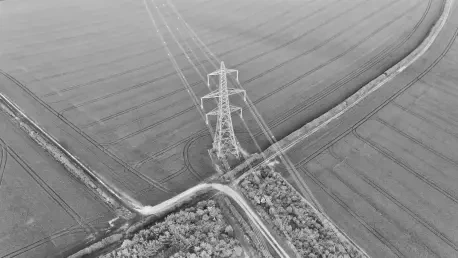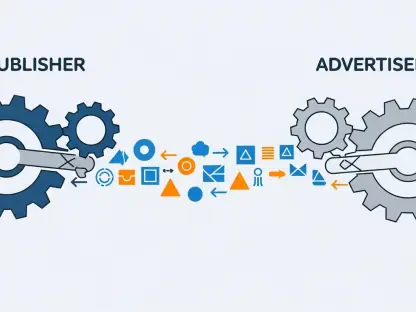In a year marked by fierce competition in the telecommunications sector, Hyperoptic, a UK-based alternative network provider, achieved an impressive 20% increase in gross profit, amounting to £87 million ($117 million) in 2024. This financial success, coupled with a 22% revenue rise to £114 million ($153 million), underscores the company’s ability to tap into the escalating demand for high-speed internet across the UK. With its customer base swelling to over 400,000 by mid-2025, Hyperoptic has emerged as a significant contender against established telecom giants. This remarkable growth isn’t just a fleeting achievement but a reflection of strategic planning and timely investments that cater to modern connectivity needs. The following discussion delves into the core elements of Hyperoptic’s approach, examining how targeted infrastructure development and market positioning have fueled this financial upswing, while also considering the broader implications for the industry as a whole.
Strategic Investments and Market Expansion
Building a Robust Full-Fiber Network
Hyperoptic’s ascent in the telecom market can be largely attributed to its substantial £173 million ($232 million) investment in full-fiber infrastructure, bolstered by an additional £150 million from the UK Infrastructure Bank. This capital has been directed toward equipping new-build homes with cutting-edge connectivity, a segment often overlooked by traditional providers. By focusing on these properties, Hyperoptic addresses a critical gap in the market, ensuring residents have access to ultra-fast internet from the outset. The emphasis on full-fiber technology not only promises superior speed and reliability but also future-proofs the network against evolving digital demands. Such a forward-thinking approach has allowed Hyperoptic to build a solid foundation for scalability, setting it apart in a crowded field where outdated infrastructure can hinder growth.
Beyond the financial commitment, the strategic choice to prioritize full-fiber networks reflects an understanding of long-term consumer expectations. The backing from the UK Infrastructure Bank signals strong institutional confidence in Hyperoptic’s vision and operational model. This isn’t merely about laying cables; it’s about creating a resilient digital ecosystem that can support everything from remote work to smart home technologies. As a result, Hyperoptic has not only expanded its physical reach but also enhanced service quality, which directly correlates with customer satisfaction and retention. This infrastructure focus has been a linchpin in achieving the 20% gross profit surge, demonstrating that well-planned investments can yield significant returns even in a competitive sector like telecommunications.
Expanding Customer Reach and Revenue
The growth of Hyperoptic’s customer base to over 400,000 is a testament to its effective market expansion tactics, which have directly fueled the revenue increase to £114 million ($153 million) in 2024. By targeting underserved areas and demographics, particularly in new residential developments, the company has captured a segment of tech-savvy consumers and businesses eager for reliable high-speed internet. This deliberate focus on niche markets has allowed Hyperoptic to build a loyal customer base that values performance over brand legacy. The revenue spike isn’t just a number; it reflects a successful alignment of service offerings with consumer needs, proving that understanding market gaps can translate into substantial financial gains.
Moreover, Hyperoptic’s ability to balance expansion with profitability sets a benchmark for other alternative network providers. The consistent improvement in service delivery, enabled by full-fiber technology, ensures that new customers receive a premium experience, encouraging word-of-mouth growth and reducing churn rates. Unlike some competitors who struggle with scaling costs, Hyperoptic has managed to convert its growing user base into a 20% gross profit increase through efficient operations and targeted marketing. This customer-centric strategy highlights the importance of not just acquiring users but retaining them through quality, a critical factor in sustaining long-term revenue growth in a volatile industry.
Industry Trends and Competitive Edge
Aligning with Digital Infrastructure Demands
Hyperoptic’s financial achievements in 2024 are not an isolated success but part of a wider industry trend where investment in digital infrastructure is paramount to meeting modern connectivity demands. Across the globe, telecom entities like Sparkle in Italy and MTN in South Africa are similarly upgrading their networks to enhance capacity and user experience. Hyperoptic’s dedication to full-fiber technology aligns seamlessly with this shift, positioning it as a leader in delivering the high-speed, low-latency connections that consumers and businesses now expect. This alignment with global demands for robust digital frameworks has given Hyperoptic a distinct advantage, allowing it to capitalize on a market increasingly reliant on seamless internet for everything from streaming to remote operations.
Furthermore, the push for advanced infrastructure isn’t just about keeping pace but about anticipating future needs in an ever-evolving digital landscape. Hyperoptic’s focus on full-fiber ensures it is well-prepared for emerging technologies such as the Internet of Things and 5G applications, which will demand even greater bandwidth. By staying ahead of these trends, the company not only secures its current market share but also builds a foundation for future growth. The 20% profit increase in 2024 is a direct outcome of this strategic foresight, reflecting how investments in infrastructure resonate with broader industry movements toward digital transformation and connectivity enhancement.
Challenging Traditional Telecom Providers
As an alternative network provider, Hyperoptic has disrupted the UK telecom landscape by offering faster and more reliable internet services at a time when many traditional providers lag in upgrading their infrastructure. This agility in addressing consumer pain points, such as slow speeds and inconsistent service, has positioned Hyperoptic as a formidable rival to entrenched industry players. The 20% gross profit boost in 2024 serves as evidence that alternative providers can thrive by focusing on specific, high-demand areas like new-build homes. This success sends a clear message to the sector: innovation and responsiveness to market needs can outweigh the advantages of size and historical dominance.
Additionally, Hyperoptic’s competitive edge lies in its ability to execute a clear, focused strategy without the bureaucratic delays often seen in larger corporations. By leveraging full-fiber technology and significant financial backing, the company delivers a superior product that meets modern expectations, setting a high bar for service quality. This approach not only attracts new customers but also pressures traditional providers to accelerate their own upgrades, fostering a more dynamic market. The financial milestone achieved in 2024 underscores the potential for alternative networks to reshape industry standards, suggesting that continued investment and adaptability will be key to maintaining this momentum in the years ahead.









